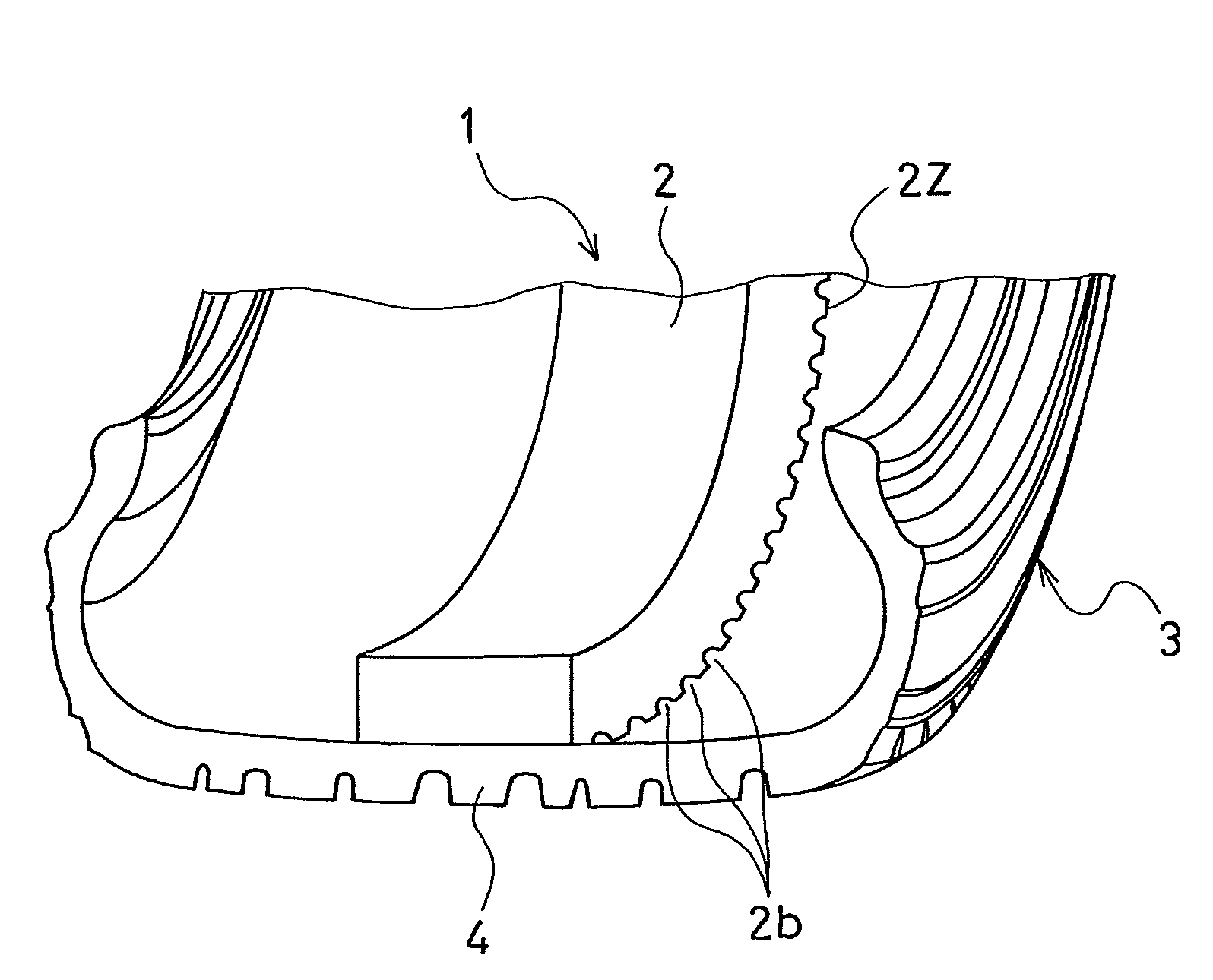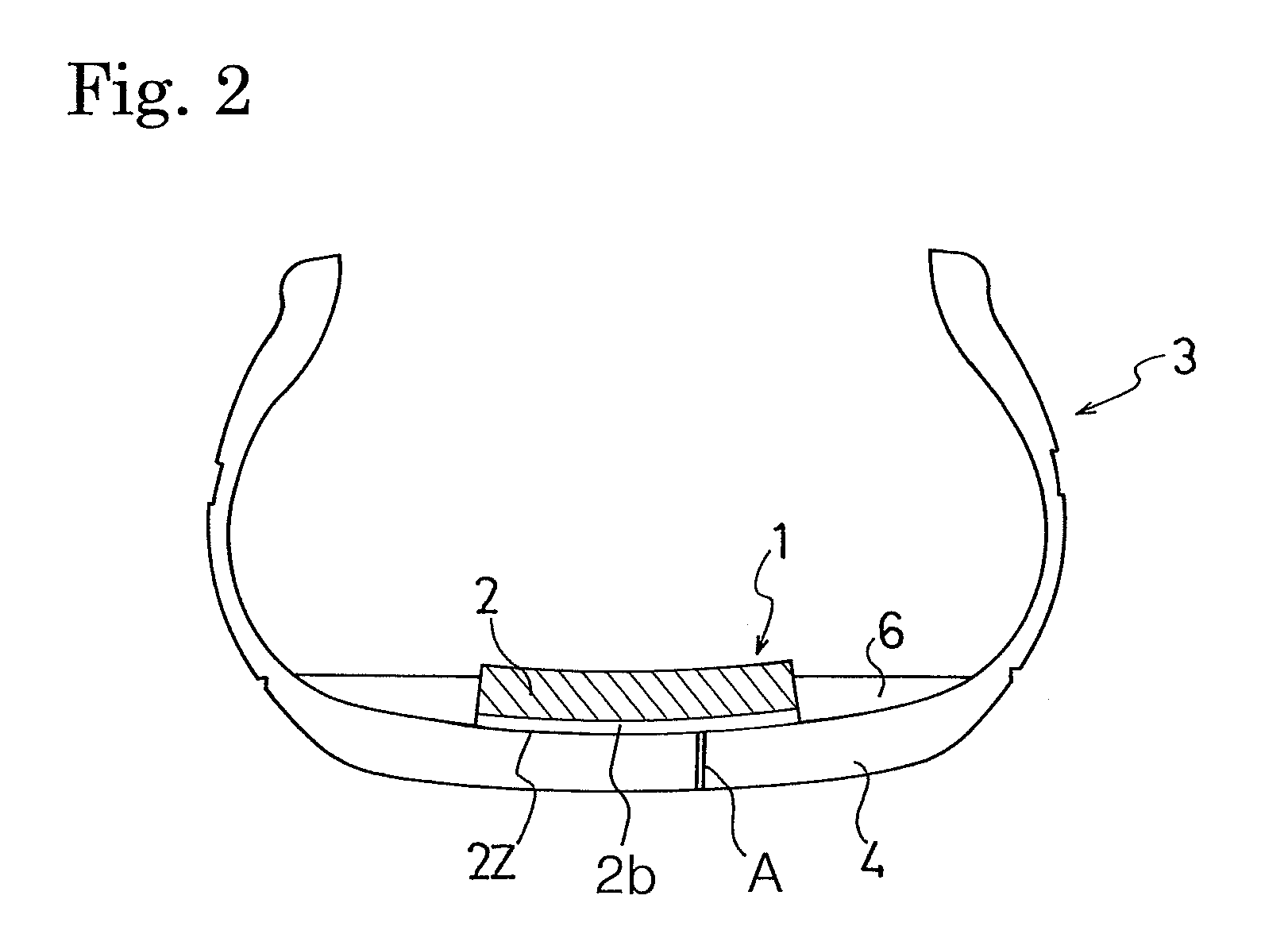Tire noise reduction device
a noise reduction device and tire technology, applied in the direction of wheels, inflatable tyres, vehicle components, etc., can solve the problems of time-consuming operation of sealing a hole in a punctured tire, inability to perform smooth tire sealing operation, and noise that is known to make the occupants of vehicles uncomfortable, so as to achieve the effect of retaining the durability of the noise absorption member
- Summary
- Abstract
- Description
- Claims
- Application Information
AI Technical Summary
Benefits of technology
Problems solved by technology
Method used
Image
Examples
examples
[0069]Eight types of pneumatic tires (Examples 1 to 5 and Comparative Examples 1 to 3) were prepared. Each of the pneumatic tires had a tire size of 215 / 60R16 and included a noise absorbing member attached to the inner surface of a tire tread portion all around, in common. The noise absorbing member was made of a foamed polyurethane (having an apparent density of 18 kg / m3) and had a width of 180 mm and a thickness of 20 mm. However, the noise absorbing member of each pneumatic tire had a different form from those of the others. In the tire of Comparative Example 1, a tire noise reduction device included the noise absorbing member with a flat outer peripheral surface as shown in FIG. 18. In each tire of Examples 1, 2 and Comparative Examples 2, 3, the noise absorbing member included multiple straight continuous grooves having rectangular cross-sections in the outer peripheral surface thereof in common. However, the tires of Examples 1, 2 and Comparative Examples 2, 3 differed from on...
PUM
 Login to View More
Login to View More Abstract
Description
Claims
Application Information
 Login to View More
Login to View More - R&D
- Intellectual Property
- Life Sciences
- Materials
- Tech Scout
- Unparalleled Data Quality
- Higher Quality Content
- 60% Fewer Hallucinations
Browse by: Latest US Patents, China's latest patents, Technical Efficacy Thesaurus, Application Domain, Technology Topic, Popular Technical Reports.
© 2025 PatSnap. All rights reserved.Legal|Privacy policy|Modern Slavery Act Transparency Statement|Sitemap|About US| Contact US: help@patsnap.com



